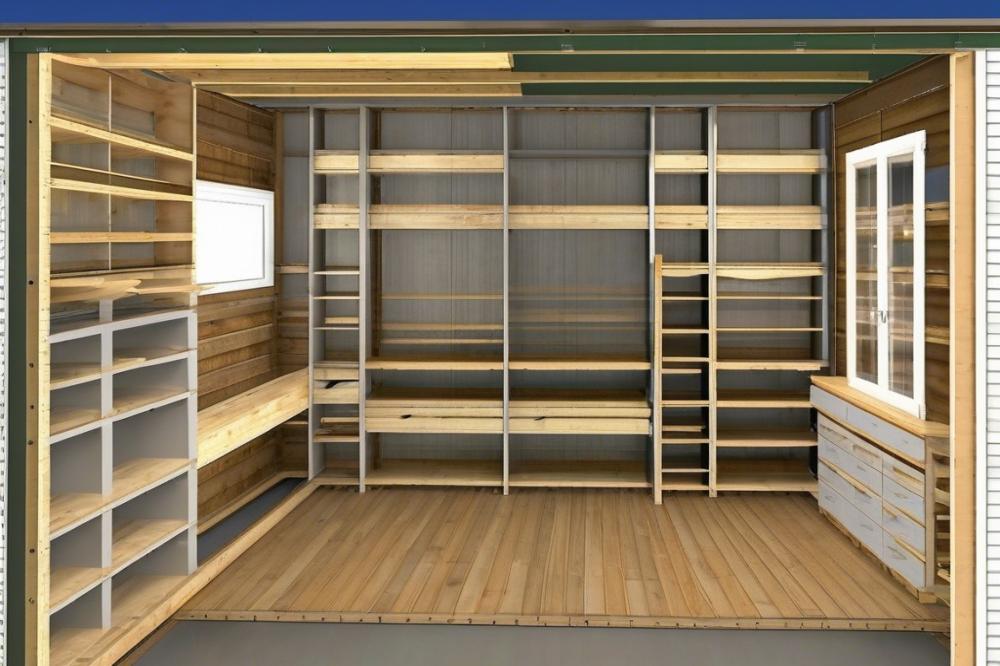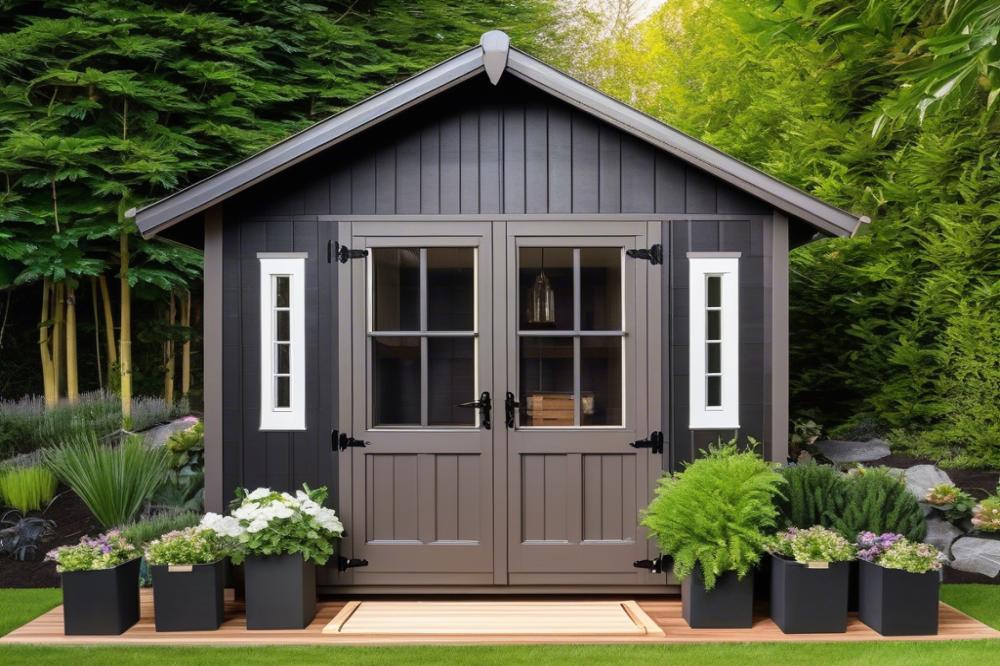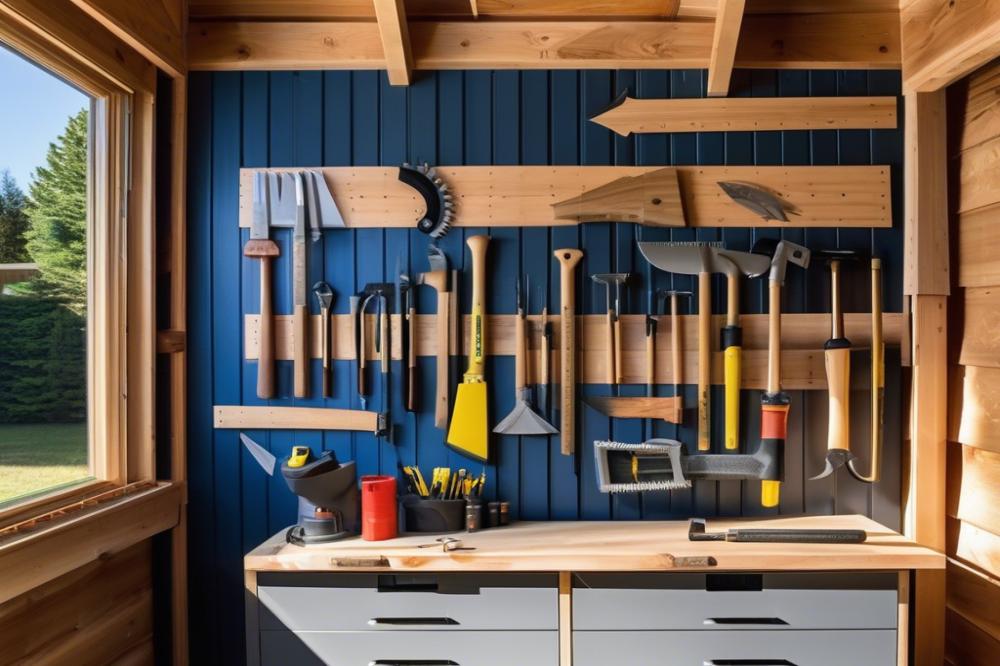Designing and Building a Shed for Maximum storage efficiency
Sheds are more than just simple outdoor structures. They can become vital spaces for maximizing storage efficiency. A well-planned shed is essential for keeping tools and materials organized. When designed thoughtfully, a custom shed can serve multiple purposes, from housing gardening supplies to storing seasonal items.
The benefits of effective organization extend far beyond mere aesthetics. By incorporating shelving and other storage solutions, you can utilize every inch of available space. This not only makes it easier to find what you need but also helps in preventing clutter. A tidy outdoor storage area can contribute positively to your overall outdoor experience.
Moving towards construction, the choice between DIY and professional services can be significant. For those who enjoy hands-on projects, building your own shed can be rewarding. You can tailor the design according to specific needs and preferences. Alternatively, hiring professionals ensures that the project meets high standards. Choosing the right approach depends on your skills, budget, and desired outcome.
Understanding shed design

Key Elements of Effective shed design
Effective shed design plays a vital role in maximizing utility. organization is crucial for keeping everything tidy and accessible. Incorporating shelving units can provide vertical storage, taking advantage of the vertical space available. It is essential to think about your individual storage items when planning. Different types of tools and outdoor storage solutions require diverse approaches. For example, larger items like lawnmowers might need dedicated space, while smaller hand tools can fit neatly on shelves or pegboards.
Assessing Your Storage Needs: Tools and Outdoor Storage
Assessing your storage needs begins with a clear inventory of what you own. Consider the range of tools you need to store. Power tools, garden supplies, and seasonal items should all have a designated spot. Planning for outdoor storage not only involves thinking about the items but also the frequency of use. Items like shovels and rakes should be more accessible than seasonal decorations. By dividing your storage by categories, you can avoid clutter and confusion.
Factors to Consider: Size, Layout, and Accessibility
Several factors influence the overall effectiveness of your custom shed. Size is the first consideration; it must fit the items while allowing space for movement. A well-thought-out layout can make a significant difference in accessibility. Avoid cramming too much into one corner. Space-saving techniques such as wall-mounted storage and hooks can help manage smaller items efficiently. Additionally, light should be part of the construction process. Good lighting makes it easier to find what you need, especially in darker corners. Remember, easy accessibility will save you time. Building a shed with a clear path will enhance your experience each time you enter.
Selecting the Right Materials

Many options exist for materials when planning a shed. Each material has its own unique characteristics. Choosing wisely can lead to improved organization and enhanced functionality. The most common choices are wood, metal, and plastic. Each type of material offers various benefits and drawbacks, influencing the overall design and construction.
Wood Sheds
Wood is a traditional choice for many DIY enthusiasts. It offers a natural look that blends well with outdoor settings. When building a custom shed, wood provides excellent versatility in design. However, it requires ongoing maintenance. Wooden structures can be susceptible to rot and pests, especially in damp climates. Therefore, weather resistance is crucial. Proper sealing and treatment can help mitigate these issues.
Metal Sheds
Metal sheds can be incredibly robust. They are often made from galvanized steel or aluminum, providing superior durability. This makes them a great option for long-term outdoor storage of tools and equipment. Unlike wood, metal does not warp or crack. However, they can be cold during winter and hot in summer. Corrosion can also be an issue in humid areas without proper coating. Additionally, metal sheds may lack the aesthetic appeal that some homeowners desire.
Plastic Sheds
Plastic sheds present a modern alternative. Typically made from high-density polyethylene or vinyl, they are light and resistant to rust and rot. These materials usually require very minimal upkeep. They are easy to assemble and can be a perfect solution for beginner builders. Nevertheless, plastic might not provide the same structural integrity as wood or metal. Some people find them less visually pleasing compared to their wooden counterparts.
Durability and Weather Resistance
Selecting the right materials goes beyond aesthetics. Durability and weather resistance are essential factors to consider. A shed that can endure rain, snow, and harsh winds will better protect your tools and outdoor storage items. Take time to evaluate your climate before making a final decision. The right choice will lead to effective storage solutions and save you from future repairs.
Maximizing Storage Solutions

Smart organization techniques play a crucial role in how you utilize every inch of a shed. Start by categorizing tools and materials. Group similar items together. This makes finding what you need easier, saving time and effort. Keeping frequently used items close at hand prevents unnecessary digging through clutter.
Utilizing shelving is another vital aspect of effective outdoor storage. Build sturdy shelves along the walls. Vertical space can be your best friend when it comes to achieving maximum storage efficiency. High shelves are ideal for items you don’t need daily, while lower levels can store tools you use often. Custom shelves can be designed to fit specific items, providing perfect homes for everything.
Incorporating pegboards and hooks offers a clever way to access tools quickly. Wall-mounted solutions help to free up floor space. Hang tools where you can see them; this provides a clear visual reminder of where each item belongs. Mixing hooks of various sizes can accommodate everything from hammers to cords. DIY pegboards can transform any shed into a functional workspace.
Using bins and containers can also enhance your organization efforts. Clear plastic containers allow you to quickly identify the contents without opening each one. Stacking bins takes advantage of vertical height and keeps the floor area open. Label each container for quick access to specific materials or tools.
Lastly, regularly reviewing your storage solutions will help maintain order. As your collection of tools grows, so may the need for more innovative solutions. Adjusting your layout and organization can keep your custom shed as efficient as possible. This ensures your outdoor storage remains functional and clutter-free.
Space-Saving Strategies

Design elements that promote space efficiency
The layout of a shed can greatly impact how much you can store. By carefully planning the interior, you can use every inch wisely. Tall walls are ideal for maximizing vertical space. Installing shelves that go right up to the ceiling allows for more organization. Consider using corners for installing corner shelving units. They can hold smaller items that might clutter the floor. Windows positioned higher up can also save space, as they provide natural light without sacrificing wall area for shelves. Optimize the door placement, too; an outward-opening door takes up less space inside compared to one that swings in.
Multi-functional furniture and storage options
Selecting multi-functional furniture can transform a simple shed into a storage powerhouse. For example, benches with hidden compartments can store tools, while still providing a place to sit. Look into foldable tables that can be tucked away when not in use. Another option is a pegboard, which keeps frequently used tools visible and easily accessible. This keeps pathways clear and surfaces uncluttered. Even using stackable bins can make a big difference. They utilize vertical space without requiring additional floor area, making outdoor storage simpler and more efficient.
The role of custom shed designs in maximizing space
Custom sheds allow you to tailor the space to your specific needs. Consider what materials and tools you use most often. Whether it’s gardening supplies or sporting equipment, a custom design lets you prioritize. Builders can incorporate specialized storage solutions like racks for bikes or hooks for shovels. This can free up valuable space that would otherwise be consumed by bulky items. DIY builders often find that personalized sheds can better accommodate their hobbies and interests. It’s all about making the construction responsive to your lifestyle. Designing a shed with your needs in mind will lead to greater efficiency and functionality.
DIY shed construction Tips
Building your own shed can be a rewarding project. It provides a space for outdoor storage and helps you organize tools and materials effectively. Follow this step-by-step guide to get started:
Step-by-step guide to building your own shed
Start by selecting a suitable location in your yard. The area should be flat and have good drainage. After that, outline the dimensions of your custom shed. A square or rectangular shape works well for maximizing space.
Next, gather your materials. Common options include wood, metal, and vinyl. Choose based on your budget and preference. Once you have everything, lay a solid foundation. This can be done with concrete blocks or a full concrete slab, both of which provide stability.
Frame the walls using 2×4 lumber. Secure them firmly to the foundation. Install the roof trusses next; these will give your shed shape. Roofing panels can follow, and don’t forget to add ventilation for air circulation.
Essential tools and resources for DIY enthusiasts
Having the right tools is crucial for a successful project. A hammer, saw, level, and drill are basic necessities. When starting, consider investing in a measuring tape and safety goggles as well.
Look for additional resources online, including detailed videos and forums. These can provide inspiration and tips from experienced builders. Local hardware stores might also offer workshops focused on shed construction.
Common pitfalls to avoid during construction
Many builders make the mistake of rushing through planning. Take your time to create a detailed blueprint. Skipping this step can lead to serious construction errors and wasted materials.
Additionally, be cautious with measurements. Double-check before cutting anything. Errors can lead to uneven walls or a roof that doesn’t fit right. A level surface is essential for a tidy finish.
Another common issue is underestimating storage needs. Plan for shelving and other space-saving storage solutions early in the design. Consider adding hooks or pegboards on the wall for tools. These features will enhance organization and keep items easily accessible.
By avoiding these pitfalls and following straightforward steps, you can enjoy the benefits of a well-built shed for years to come.
Final Insights on Effective Shed Design
Optimal design for a storage shed can greatly improve how your space functions. A well-planned structure allows you to maximize organization. You can find places for all your tools, gardening supplies, and seasonal items when you think ahead. By focusing on smart layout choices, you will experience ease every time you enter.
Implementing effective strategies for everyday storage will make a noticeable difference. Consider adding shelving at varying heights to accommodate different items. Vertical space often goes unused, so take advantage of it. Bins and hooks can keep smaller tools from cluttering the floor. Every item should have its own designated space.
Reflect on how a thoughtfully crafted shed enhances daily life. Efficient use of space saves time and reduces frustration. Having everything in its place means no more hunting for tools or digging through piles of boxes. Enjoying a tidy shed can inspire you to tackle projects with confidence and enthusiasm. Investing time and effort into your shed design truly pays off in the long run.



